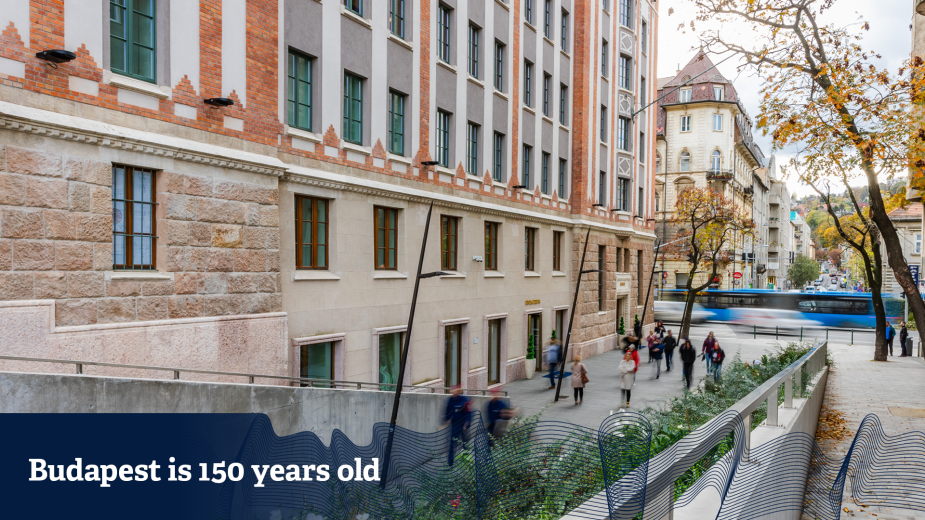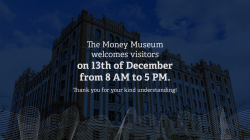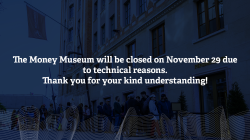
Today marks the 150th anniversary of the unification of Budapest: on the 17th of November 1873, Pest, Buda and Óbuda (old Buda) were united during a Honorary General Assembly. The capital also inspired our currency designers, with several iconic sites appearing on our banknotes and coins. In our round-up, we look at when and how the iconic sites of Budapest appeared on our currency.
How many coins can you remember that feature a famous site in the now 150 years old Budapest? The capital has inspired the designers of our currency, and we have several well-known sites from it on our banknotes and coins. The most recurring site is the Chain Bridge, often identified as the symbol of the capital. As on the banknotes of many countries, the most distinctive features of the coins are the portraits on the obverse. Less attention is paid to the reverse, which often depicts important places in the life of the country. The reverse of the six denominations in the current series of banknotes depicts a scene related to the portrait on the obverse, i.e. the life and work of the person depicted. The 500 forint banknote shows the Rákóczi Castle in Sárospatak, on the 1000 forint note the Renaissance fountain of King Matthias' palace in Visegrád can be found, the 5000 forint note features the Széchenyi Castle in Nagycenk, the 10,000 forint note shows the view of Esztergom, one of the first royal seats, and the 20,000 forint note portrays the old House of Representatives, an important place of Ferenc Deák's work. The smallest denomination of the series, the 200 forint note, has already been withdrawn from circulation. The obverse shows King Károly Róbert (Károly I) and the reverse the castle of Diósgyőr. The 2000 forint denomination was issued with a portrait of Gábor Bethlen, Prince of Transylvania. It is not possible to associate any significant place in the territory of present-day Hungary with his life, so a painting by Viktor Madarász entitled ‘Among Bethlen's Scholars’ was chosen to be on the reverse side of the banknote. Of the depictions on the reverse of the series, only one is in Budapest: the old Assembly House designed by Miklós Ybl in today's Bródy Sándor Street, in front of which a section of the Museum Garden can be seen.
Budapest on the banknotes of prior generations
Prior to the current series of banknotes in circulation, only images of capital city locations were chosen for the metal and paper coins. The aim was not always to achieve consistency between the obverse and reverse, nor even to show the city. Rather, an image of the city or a building that was known to all and could be considered symbolic was chosen. The first time a city image appeared on Hungarian currency was on the 10-krona banknotes of 1920. In the foreground is the Chain Bridge, the Danube and in the background the Buda Castle can be seen. Unique in the history of Hungarian money, the city image was placed on the obverse of the coin, and - also unusually - in the top centre. The same part of the city appears on the 1926 and 1928 5 pengő banknotes. Without the Chain Bridge, the reverse side of the 100 pengő note shows the Danube and Buda Castle, as conceived by Ferenc Helbing in 1926 and Álmos Jaschik four years later. Helbing's version was used again for the inflation line in 1945. The 20 korona of the 1920 series show, in the traditional manner, the Matthias Church in an oval frame on the right side of the obverse. The first 10 pengő coins feature a picture of the Parliament. The 1926 version is seen on several denominations of the hyperinflation series, the 100 million, the 100 million mil and the 100 million B pengő notes. The Parliament is also the main motif of the 1945 aluminium 5 pengő note. The 1,000 pengő note of 1943 shows a view of Budapest from Gellért Hill, with the Chain Bridge and Margaret Bridge in the distance. Zoltán Nagy, the designer of the 500-forint banknote of 1970, which had a different look from the traditional one, chose a similar perspective. The foreground of the picture is dominated by the new Elisabeth Bridge. In 1991, the Hungarian Academy of Sciences was placed on the reverse of the 5000-forint banknote, while the front side shows the well-known portrait of István Széchenyi.
Metal coins and the capital
Few of our metal coins have urban elements. One of the prides of the era, the new Elisabeth Bridge, was placed on an aluminium 50-cent coin, which was introduced in 1967 and used until 1999. From 1971, the 10-forint metal coin featured the statue of Liberty on Gellért Hill on the obverse. From 1992, the silver 200 forint, with the stylised Chain Bridge on the obverse, could only be used for six years. An interesting feature of the bicolour 200 forint, which is still in circulation and contains no precious metal, is that in 2008 the public was able to vote on the main element of the coin design via the internet and by telephone. There were three themes to choose from, including two different motifs in each theme: protected birds and plants to complement the existing coin line, and two bridges, the then newly opened Megyeri Bridge and the Chain Bridge. The Chain Bridge received the most votes. The only time the Central Bank of Hungary appeared on a coin was in 1930, on the 20 pence coin. More than half a century later, the image of the central bank was reintroduced on the silver 200 forints, but despite the large number of silver coins in circulation, they were rarely seen and an average person did not known about them.
Further news
All newsThank you for your kind understanding!
The success of the HUNOR Program is now on display in the exhibition space
The Tarnay family brought silver bowls
Thank you for your kind understanding!
Thank you for your kind understanding!
The success of the HUNOR Program is now on display in the exhibition space
The Tarnay family brought silver bowls
Thank you for your kind understanding!



